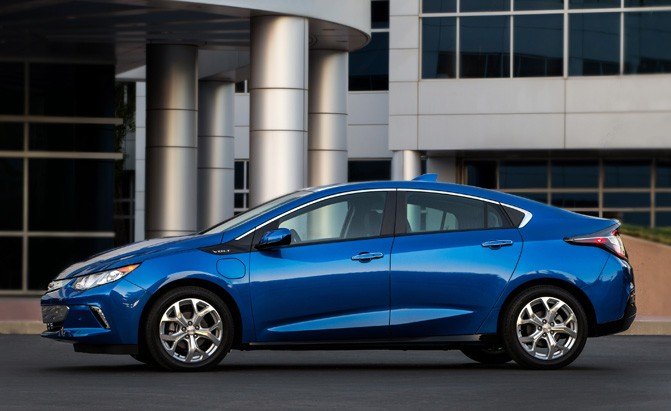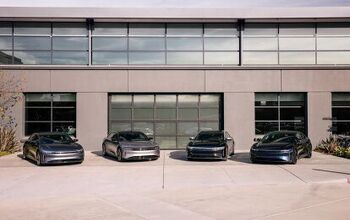2019 Chevrolet Volt Gets a Low Speed EV Warning Sound
To this author’s ears, it’s a noise that seems to herald the arrival of the spaceships coming to take all of the world’s children to a new home in the sun. Chevrolet claims it’s supposed to feel more natural and less intrusive. Whatever your take, the new low-speed warning noise is a necessary addition to the 2019 Volt — looming federal guidelines demand it.
Expect to hear a different kind of tonal landscape once electric vehicles and plug-in hybrids make up a larger portion of the teeming vehicle masses. Hear for yourself:
In response to requests from Twitter users, Michael Wayland of Automotive News posted this video on Twitter Monday morning.
Here you go (video also being uploaded to article). pic.twitter.com/5Py6fJDC5R
— Michael Wayland (@MikeWayland) September 24, 2018
Years in the making, the new dictate from the U.S. Department of Transportation requires at least half of all EVs or PHEVs (“quiet vehicles”) to emanate a government-approved noise at speeds below 18.6 miles per hour by September 1st, 2019. All vehicles must conform within a year from that date.
Much like car horns, the exact tone isn’t standardized, and individual automakers will come up with their own solution. Some OEMs, if allowed, might continue with the low-frequency hum or buzzing sound already in place in existing quiet vehicles. The Volt swapped its buzz for this new sound for the 2019 model year, with the all-electric Bolt to follow.
“We put a lot of work into making sure it was quiet on the inside of the car,” Rob Mantinan, Volt program engineering manager, told Automotive News. One can imagine the disincentive for new car buyers if an intrusive hum made its way into the cabin of the car, even at low speeds.
“The new [tone] is more tonal. It’s more deliberate. It’s more noticeable, for sure, on the outside of the car,” Mantinan added.
An external speaker emits the noise in either drive or reverse, with volume increasing to match the vehicle’s speed. Mantinan said the company wants to offer fair warning to pedestrians that the vehicle is speeding up.
SEE ALSO: Next Chevy Bolt EV Reportedly Not Coming Until 2025
According to the National Highway Traffic Safety Administration, EVs and PHEVs are 19 percent more likely to hit pedestrians and cyclists. Blame the stealthy nature of their electric powerplants for the heightened risk. (Diesels must sit at the top of the safety pyramid in this regard.)
Of course, Chevrolet isn’t rolling out a first drive event for the mildly refreshed 2019 Volt just because of a sound. There’s changes afoot to the brand’s “extended-range electric vehicle,” a major one being the vehicle’s reduced charging time. GM wants more Volt buyers to treat their vehicle as an EV, charging it up whenever possible, rather than relying on the 1.5-liter four-cylinder generator to complete the owner’s daily driving duties.
A version of this story originally appeared on The Truth About Cars.
More by Steph Willems
































Comments
Join the conversation
Exciting.
That new Bolt sound is annoying, it'll be effective in getting noticed. Now the damn Toyota Prius needs to have it's backup sound on the outside of the car.